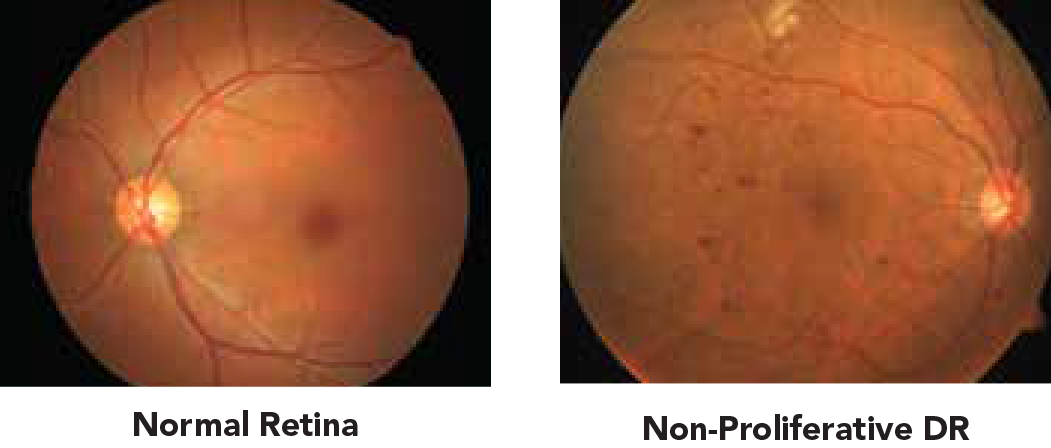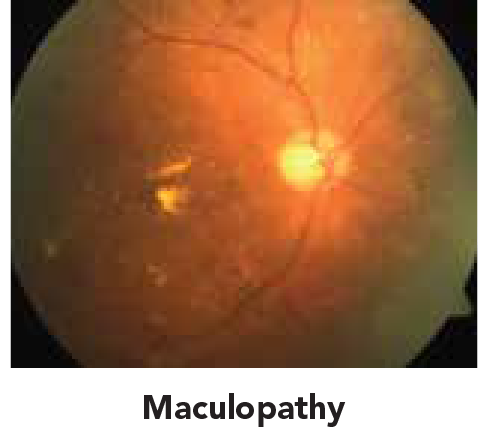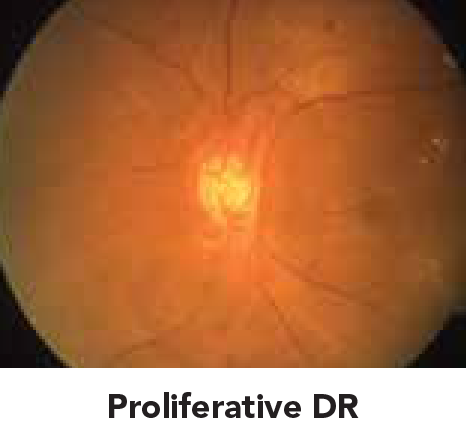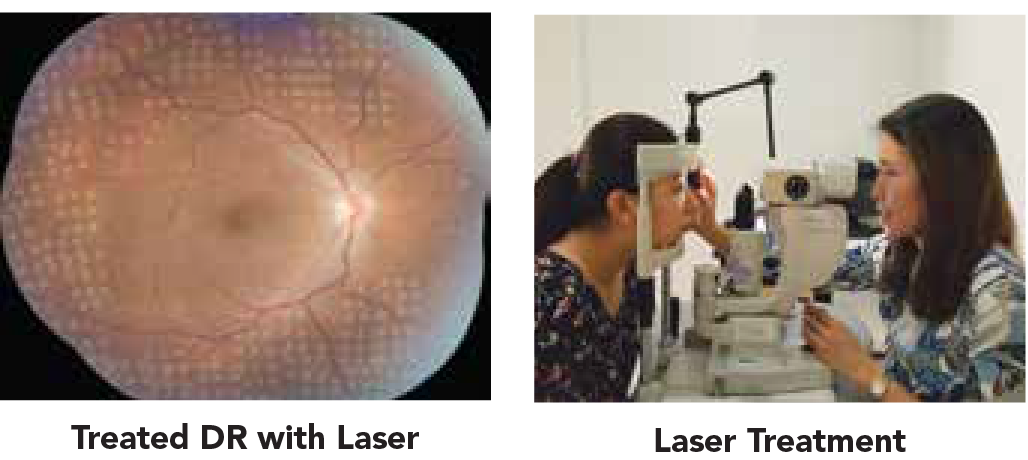Download PDF, 2.52MB, PDF
What is Diabetes?
Insulin is the hormone which regulates the sugar metabolism in the body. Diabetes is a condition in which the body cannot cope with sugar and other carbohydrates due to a lack of insulin or because of an abnormal resistance to it.
Diabetes can cause complications, which affect different parts of the body including the eye. There are two different types of diabetes:
-
Type 1 diabetes
- This type usually occurs before the age of 30 and is treated with insulin.
-
Type 2 diabetes
- This type usually occurs after the age of 40 and can be controlled by diet or tablets, some patients however may also need to use insulin as well.
What is Diabetic Retinopathy (DR)?
This is a disease of the retina (the nerve layer lining the inside of the eye) resulting from the effects of diabetes on its blood vessels. It is the leading cause of blindness in people between the ages of 20 – 60 years of age.
There are mainly three types of diabetic retinopathy:
1. Non-proliferative Diabetic Retinopathy

These patients have diabetes for a long time. At this stage the vision is normal and the blood vessels of the retina are mildly affected.
2. Diabetic Maculopathy

Diabetes can cause the blood vessels of the retina to leak fluid and protein. This causes the retina to swell and if the swelling involves the centre of the retina (the macula), vision will be affected.
3. Proliferative Diabetic Retinopathy

As the condition progresses, the retinal blood vessels become blocked and this can lead to the development of new vessels. These new vessels are abnormal and fragile; they may rupture and bleed into the eye, this is called vitreous haemorrhage and causes sudden loss of vision. In more advanced cases scar tissue develops. This scarring pulls and distorts the retina and may even cause retinal detachment and a more severe loss of vision.
What Treatment Options are Available?

1. Laser treatment
Laser treatment to the points of leakage for diabetic maculopathy can decrease the swelling and stabilise vision. More extensive laser treatment in the early stages of proliferative retinopathy can cause the abnormal blood vessels to regress, preventing more severe complications.
However laser treatment is not without side effects. Some patients may experience a decrease in side vision (peripheral vision). Night and colour vision may also be affected.
2. Surgery

In some diabetic patients the disease progresses despite laser treatment, leading to persistent bleeding in the eye or retinal detachment. Vision then continues to deteriorate. In such severe cases, surgery such as a vitrectomy may be required.
3. Injection of medication inside the eye
Injecting some medication e.g. Anti-VEGF – Ranibizumab (Lucentis®), Aflibercept (Eylea®), Bevacizumab (Avastin®), or steroids – Ozurdex®, Triamcinolone inside the eye may help to maintain or improve vision in some patients with diabetic maculopathy and can prevent progression of retinopathy in select cases.
Apart from the above mentioned treatment options for diabetic retinopathy and maculopathy, the most important aspect would be a multidisciplinary approach to control blood sugar, levels, blood pressure and blood cholesterol levels and screen for diabetes related diseases of other organs like the peripheral nerves and kidney. Patients with diabetic retinopathy have to maintain regular check ups with their primary care physician and will need to attend specialist clinics for the eye, kidney and feet, as and when they are referred.
Strict control of blood sugar, blood pressure and cholesterol with regular exercise will form the mainstay of treatment in addition to treatment of eye related disease.
How Can I Prevent or Delay Diabetic Retinopathy?
Many studies show that tight control of your blood sugar, as well as keeping your blood pressure and blood cholesterol within normal limits have a major positive effect on your diabetic retinopathy.
Why Do I Need an Annual Eye Examination?
It is important for patients diagnosed with diabetes to have eye screenings early in order to detect diabetic retinopathy. If diabetic retinopathy is not detected or treatment is not needed after the initial examination, it is equally important that diabetic patients follow up regularly with their eye screening as diabetic retinopathy may appear or progress with time.
Early treatment gives patients a good chance of maintaining vision throughout life. Without treatment, the risk of blindness is high.
